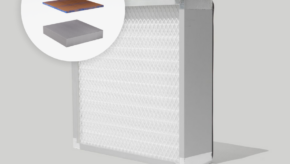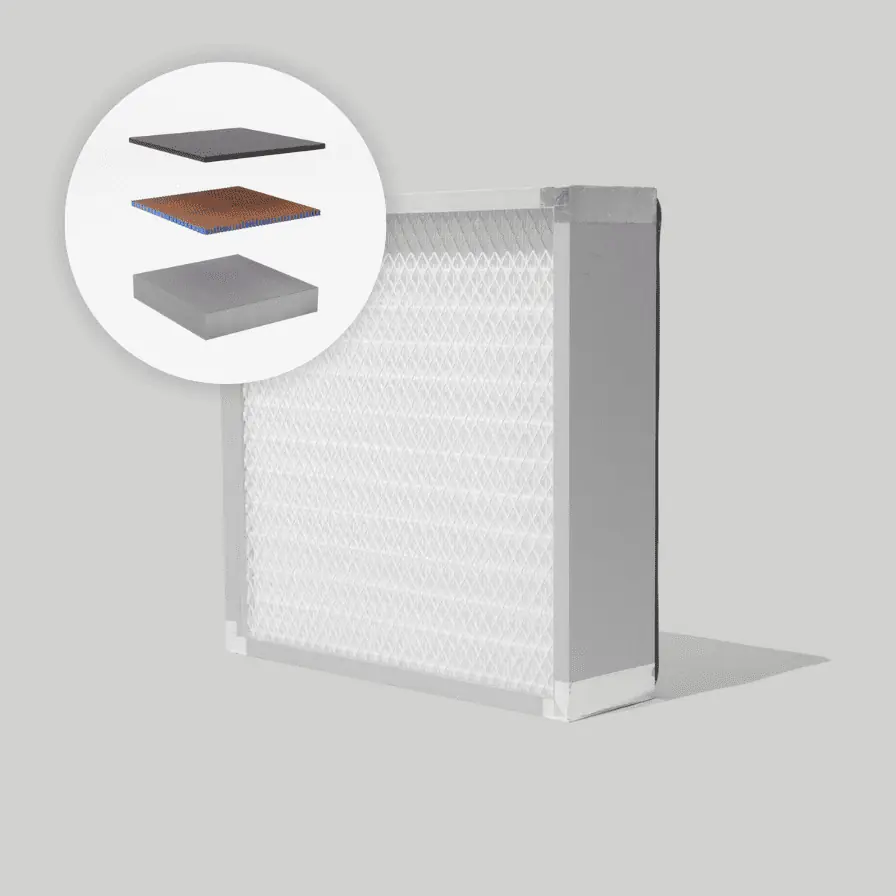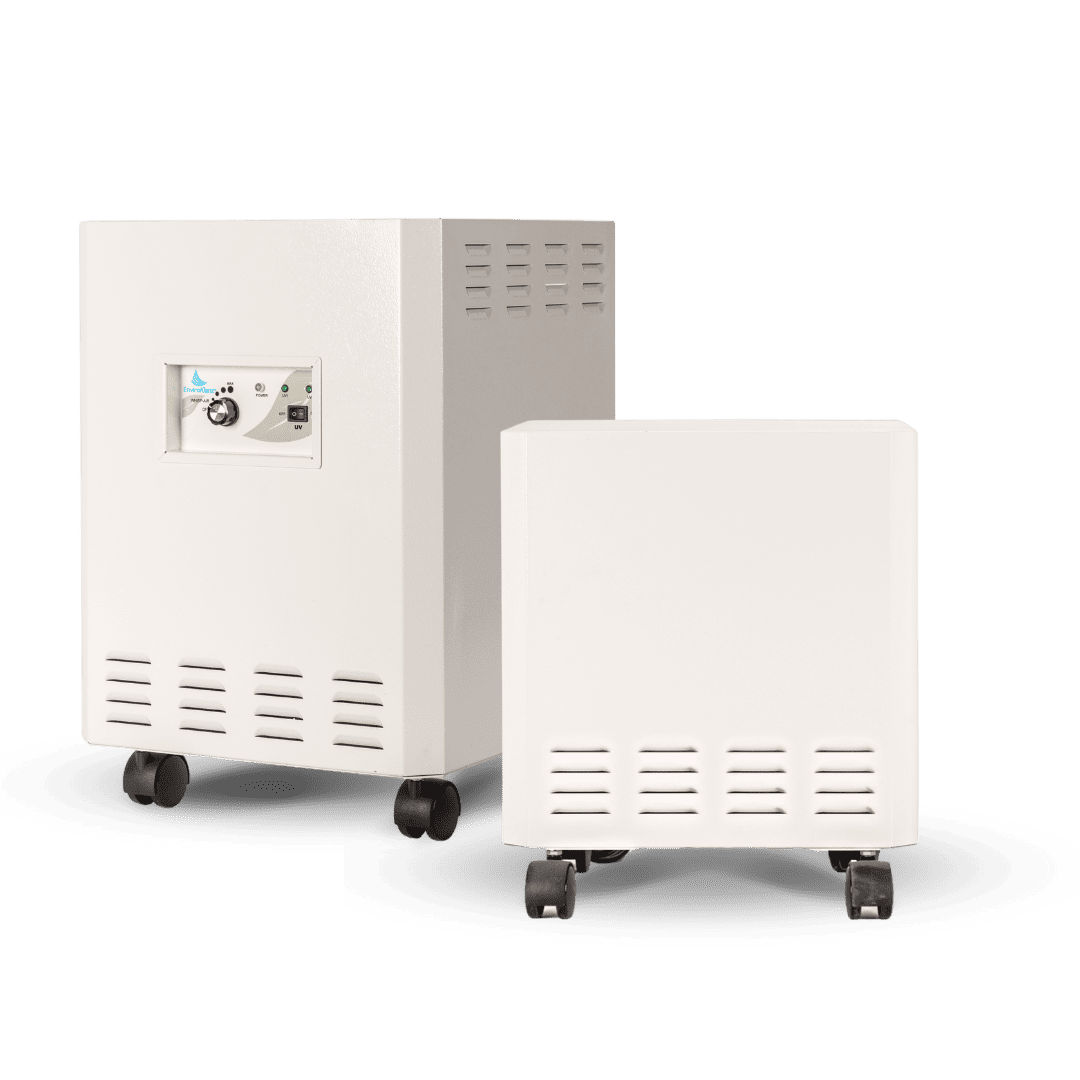Have you ever heard of a technology called Carbon, or sometimes commonly referred to as Activated Carbon? If you have been exploring the world of air purifiers and the different technologies they use, then chances are you have stumbled across this technology through your exploration. Air purifiers have become increasingly more appealing to consumers, as indoor air quality concerns have come to the limelight with the help of researchers and the EPA (Environmental Protection Agency).
Our indoor air has the potential to obtain a high volume of contaminants and airborne pollutants that can drastically effect both the indoor air quality in the environment and potentially the health of those individuals exposed to the contaminated air. With more and more collected information on the hidden dangers that may loom inside indoor air, particularly within your home, an outpouring of technologies has been created and marketed to consumers for air purification of these indoor spaces.
Carbon technology has been around for a long time and has been used in many different capacities including purification of water, and now air. Many air purifiers today have adopted this technology and have implemented the carbon technology within their air purification systems. The question, however, is how effective is this technology at purifying the air of contaminants and particulates and is carbon considered safe to use for air filtration?
To better understand the carbon technology, we are going to break down the functions and capabilities of this air purifier technology below!
What is an Activated Carbon Air Filter?
Carbon air filters are a type of filter that is most commonly utilized to remove gases from the air. The design of the carbon air filter allows for it to filter gases through a bed of activated carbon and they are usually used to combat Volatile Organic Compounds (VOCs) that become released by common household products like cleaning supplies, new flooring, and furniture. This technology is also able to remove odors from the air as well, such as the smell of tobacco – but when it comes to the removal of fine particles like mold, dust, and pollen a carbon air filter will be inefficient.
When it comes to understanding what an activated carbon air filter is composed of it is basically formed from small pieces of carbon, that are typically in granular or powdered form, which has been treated to be extremely absorbent. It is so absorbent that just one gram of the activated carbon can easily have a surface area of 500m2 or higher. The high surface area provided by carbon air filters enables contaminants and allergens to become absorbed into the material.
The process of adsorption is the distinct process activated carbon goes through when reacting to airborne contaminants. The activated carbon will cause the pollutants to stick to the filter, and the more porous the material, the more contaminants it will capture. Once these filters fill up, and the material is covered in contaminants, issues will begin to start unraveling with this technology – particularly the doped activated carbon.
Activated Carbon vs Activated Charcoal
Activated carbon and activated charcoal are interchangeable terms that refer to the remnants of incomplete combustion. When you burn a piece of wood, the readily combustible material in the wood has burned away and has left black char that mostly consists of carbon. Whereas industrial processes used by heating a substance in a vacuum chamber will result in charcoal, which will release all the volatile compounds and leave behind the traces of carbon. Ultimately, both the activated charcoal and the activated carbon are highly absorbent materials that are effective at attracting and removing organic chemicals and gasses, i.e. VOCs.
The term used to describe the carbon or charcoal that is labeled ‘activated’ is the description of the process that the carbon and charcoal undergoes to make it more effective at trapping gas molecules. The carbon or charcoal is injected with hot air, carbon dioxide, or steam, creating a mesh of tiny pores in the carbon that increases the overall surface area. Sometimes these activated carbons are also impregnated with a chemical, potassium permanganate, that enhances the carbon air filters ability to filter specific pollutants and collect them on the surface of the filter.
Understanding the Carbon Technology
For those individuals who are analyzing the different air purification technologies available, when it comes to the popular carbon technology many consumers will wonder, why should you look for an activated charcoal filter and how does this technology work to filter the air. The history of carbon air filters is long, as it has been used for several hundred years and are considered one of the oldest means of purification for water. The use of carbon can be dated back as far as ancient Egyptian cultures, where they used it for medical purposes and an agent for purification. It was also discovered that carbon was used in the past for removing impurities in smelted metal for the manufacturing of bronze.
The uses of carbon technology are vast, and interesting enough, carbon was actually used in World War I in gas masks to filter out some of the deadly gases that were used against the troops, however, it was only effective against some of these toxic gases. After World War I the production and use of carbon grew drastically, and eventually led to the development of modern activated carbon in air filters.
How Does it Work Against Airborne Pollutants
Activated carbon technology is packaged into an air filter that is able to be inserted into an air purifier to help capture pollutants in the air. When contaminated air enters into the filtration system, and passes through the activated carbon, it will undergo adsorption and leave the filter purified. The ‘adsorption’ process that carbon undergoes is different from that of ‘absorption’ – the key difference of the two is that during adsorption the pollutants will stick to the outside, rather than absorption that absorbs pollutants inside the structure itself.
When carbon is activated with potassium permanganate, it creates a mesh of carbon atoms that connect to each other, and therefore increases the overall surface area of the carbon air filter for pollutants to attach to after contact. The adsorption of the pollutants onto the carbon filter media will build-up overtime, increasingly filling up the activated carbon media site. Once this media becomes saturated, the filter will lose its ability to retain and trap pollutants on the filter any longer, leaving these pollutants to begin releasing back into the environment.
Carbon filters, like every other air purifier technology, will have benefits and disadvantages that they offer to the indoor air. Do the benefits out-way the disadvantages when it comes to carbon air filters in air purifiers?
How Long Does Activated Carbon Last in Air Filter
Carbon air filters work through “adsorption” collecting and trapping pollutants including gaseous and odorous contaminants within the carbon filter media that air is forced through. These air filters work by weight, and as pollutants accumulate and become trapped in the filter media of the carbon it will eventually become saturated. Once the activated carbon filter reaches saturation it will steadily start to expel and release the collected pollutants back into the indoor air that the pollutants were once filtered from, thus acting counterproductively in the environment.
Pinpointing the exact saturation point of your activated carbon air filter is the issue, and thus the ambiguity surrounding how long does an activated carbon last in an air filter is still an unknown dilemma. The life of a carbon air filter will depend on several factors including the conditions in an indoor environment, the size of. the environment, and how much carbon is used in the activated carbon air filter.
Benefits of Carbon
The benefits associated with using carbon air filters will start with its ability to capture and remove unwanted or harmful VOCs from indoor personal air. Activated carbon filters are also able to eliminate unpleasant odors from the air, which will be helpful when dealing with an odor like tobacco smoke in your environment.
Disadvantages to Carbon
There are two major disadvantages to using carbon air filters in your HVAC system or in your air purifier. These two disadvantages include the following:
- Frequent Filter Replacements: Carbon filters and activated carbon filters will eventually become saturated and this can happen quicker than you may think – sometimes more frequently than once a month! Replacing filters can be both inconvenient and costly, and determining when you will need to replace these filters is usually a guessing game, as there are not visible signs or indicators when the filter becomes full. If you do not change your carbon filter frequently, you run the risk of your carbon air filter spewing pollutants back into your environment, and therefore tainting your indoor air.
- Inability to Remove Particulates: Carbon air filters were designed to remove many organic compounds from the air. However, when it comes to the removal of particulates, carbon is unable to work effectively against these contaminants.
Comparison: HEPA and Carbon Filter Air Purifiers
These two air purification technologies, HEPA and Carbon, both function in completely opposing ways – where one focuses on particulate removal and the other on VOCs. What is the better air filter technology for your air purifier? We will compare the two below and learn what is true HEPA filter and how effective is it compared to carbon:
HEPA filters are some of the most popular and widely known filters for air purifiers. HEPA stands for High Efficiency Particulate Air, and it follows strict standards – the ability to filter 99.97% of contaminants in the air that are larger than 0.3 microns in size. This means the filter is able to capture fine-particulate matters and allergens in the air such as bacteria, mold, dust mites, and pollen.
Whereas a carbon air filter were not designed for particulate removal and are simply inept when it comes to capturing these smaller particulate matters. Instead they concentrate solely on the removal of odors, VOCs and other pollutants in the air.
How Long Do Carbon Filters Last vs HEPA Life
When it comes to determining the overall life span of your air purifiers filter, gaging the life of a carbon air filter can be a major challenge. Carbon air filter fill up by weight, and when their entire activated carbon media site is inundated with pollutants it will begin to re-release these pollutants back into the air. Therefore, if your indoor environment is flooded with pollutants than the filter will not last for as long, as it has more pollutants to collect.
In contrast, a HEPA filter under the right conditions can last for up to 5 years, but typically you can expect them to stay effective for 2 to 3 years. These filters last longer because they do not work by adsorption or weight, giving the filter more longevity for collecting particulates.
Conclusion: Safety & Efficiency of Carbon Air Filters
Carbon technology and carbon air filter is a popular air purification technology, but it has its downfalls and disadvantages. Although this technology is effective against VOCs and odors, it tends to fall short in particulate removal. Therefore, instead of using the traditional, outdated carbon technology, you will want to use a combination of VOC and odor elimination technology with a HEPA filtration. The EnviroKlenz patented earth mineral technology, in comparison to carbon, is able to capture and neutralize VOCs, odors, and chemicals completely, rather than storing them within the filter for the potential of re-release back into the environment.
Be smart when it comes to purchasing air filters and air purifiers, and do you research on the different technologies available, so you get the superior technology for your indoor air.
EnviroKlenz® Medical Disclaimer:
“Any information that is provided on this website is not for the use by any commercial or personal entity without expressed written consent of the blog author. The material and statements illustrated within this blog are not intended to diagnose, treat, cure, or prevent any diseases or medical conditions. Nor does the author in any way guarantee or validate the validity, totality, or efficacy of any claims and will therefore not be held responsible for the content of any claims. Always consult your medical physician for any specific medical advice or recommendations.”









